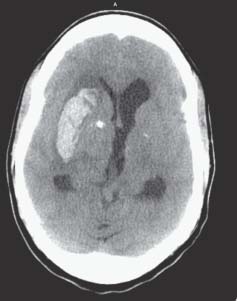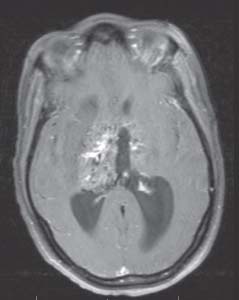Case 28 Cerebral Arteriovenous Malformation Fig. 28.1 Computed tomography scan of the head showing a right basal ganglia bleed. Fig. 28.2 Magnetic resonance imaging scan of the head showing a basal ganglia arteriovenous malformation.


 Clinical Presentation
Clinical Presentation
 Questions
Questions
 Answers
Answers
< div class='tao-gold-member'>
28 Cerebral Arteriovenous Malformation
Only gold members can continue reading. Log In or Register to continue

Full access? Get Clinical Tree


